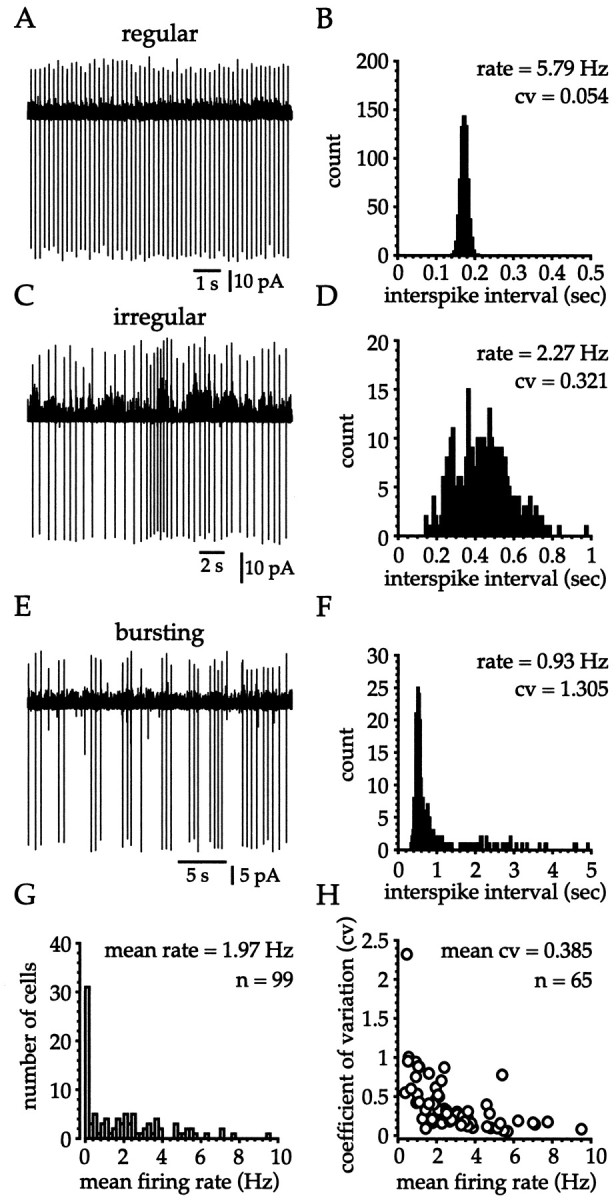Fig. 3.

Cholinergic cells exhibit a range of firing rates and patterns during cell-attached recordings at 35 ± 2°C from 3 to 4 week postnatal rats. A, B, Regularly spiking cells were readily identified during cell-attached recording and exhibited a narrow unimodal Gaussian distribution in the ISI histogram (bin width = 5 msec; 2 min sample). C,D, Irregularly spiking cells were recognized by the large variability in the ISI and gave rise to unimodal ISI histograms with a large variance (bin width = 10 msec; 2.5 min sample). The fluctuations in the baseline of the cell-attached voltage-clamptrace result from the opening of large conductance channels. E, F, Burst firing was characterized by the clustering of spikes and produced a very skewed ISI histogram, with the peak corresponding to the modal intraburst interval and variable, long-duration ISIs corresponding to the interburst intervals (bin = 25 msec; 4.5 min sample).G, Cholinergic cells exhibited a range (0.00–9.52 Hz) of firing rates with the majority of cells (69%) spiking at >0.2 Hz.H, The relationship between CV and firing rate shows a general trend for more rapidly firing cells to be more regular.
